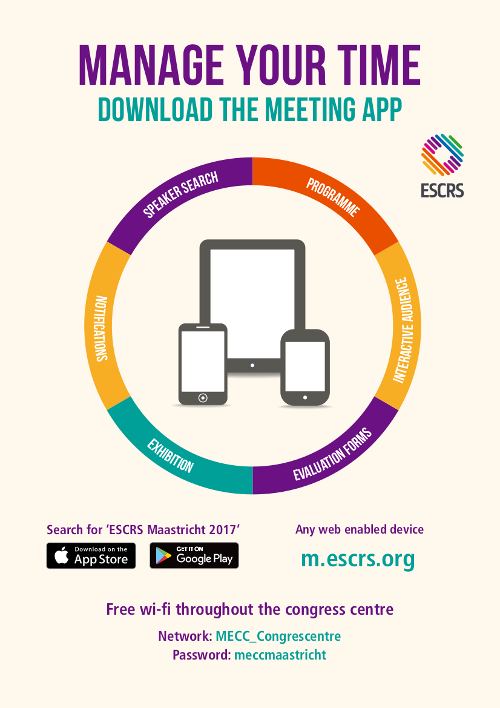Posters
(results will display both Free Papers & Poster)
Is topical anesthesia sufficient in cataract surgery? Possible factors that may influence the perceived pain during cataract surgery
Poster Details
First Author: S. Parreira PORTUGAL
Co Author(s): S. Barros A. Miranda F. Freitas N. Campos
Abstract Details
Purpose:
Usually, cataract is a condition related to age, commonly conducted under topical anesthesia. Perioperative pain management not only reduces the patient’s anxiety, before and after cataract surgery, but also improves the patient’s intraoperative cooperation. There are many possible causes which can influence the perceived pain in surgery. Therefore, the aims of our clinical trial are to identify personal and intraoperative factors correlated with the severity of pain during cataract surgery; analyse anxiety and pain scores; and to help surgeons evaluate and manage perceived pain during cataract surgery.
Setting:
This clinical trial occurred in Hospital Garcia de Orta (Institutional practice), in the Department of Ophthalmology. Patients enrolled were submitted an ambulatory non complicated cataract.
Methods:
Prospective study comprised 60 patients (mean age: 75) having ambulatory cataract surgery under topical anesthesia. Previous ophthalmologic examination was obtained by consulting our database. Some patients received intravenous analgesic (paracetamol 1g EV) 10 minutes before surgery. Preoperative anxiety and postoperative pain were evaluated by a visual analogue scale (VAS) (numbered line ranging from 0 to 10). Patients undergoing second-eye surgery were also asked to compare the severity of pain during their first-eye and second-eye surgery. All statistical analyses were performed using SPSS version 22.0. Spearman’s and Kendall’s tau correlation was used to analyse the correlations between selected variables.
Results:
The majority of patients underwent first eye-surgery (n=38); patients who underwent their second-eye surgery reported more pain than the first (45%); average pain and anxiety scores were low (score 2); there were no difference between groups who received (n=53) and don´t received (n=7) intravenous analgesic; average time of surgery was 10 minutes and there was no correlation with pain as well as age or visual acuity; type of cataract and pain was not statistically significant (Kendall’s tau=0.0272, P=0.013); the VAS anxiety score was significantly and negatively correlated with the VAS pain score (Spearman’s p = −0.441, P=0.00).
Conclusions:
Patients who had cataract surgery under topical anesthesia and intravenous analgesic were highly satisfied and reported minimal intraoperative pain. Perhaps using only topical anesthesia may not be sufficient to achieve decent levels of anxiety and pain for good cooperation and satisfaction of patients. Our findings indicate that patients reported more pain in second-eye surgery compared with their first-eye surgery, and the bigger pain scores were correlated with lower preoperative anxiety scores. Despite this findings are consistent with other studies it’s important to remember that the scales used are very subjective and dependent of several factors.
Financial Disclosure:
None



